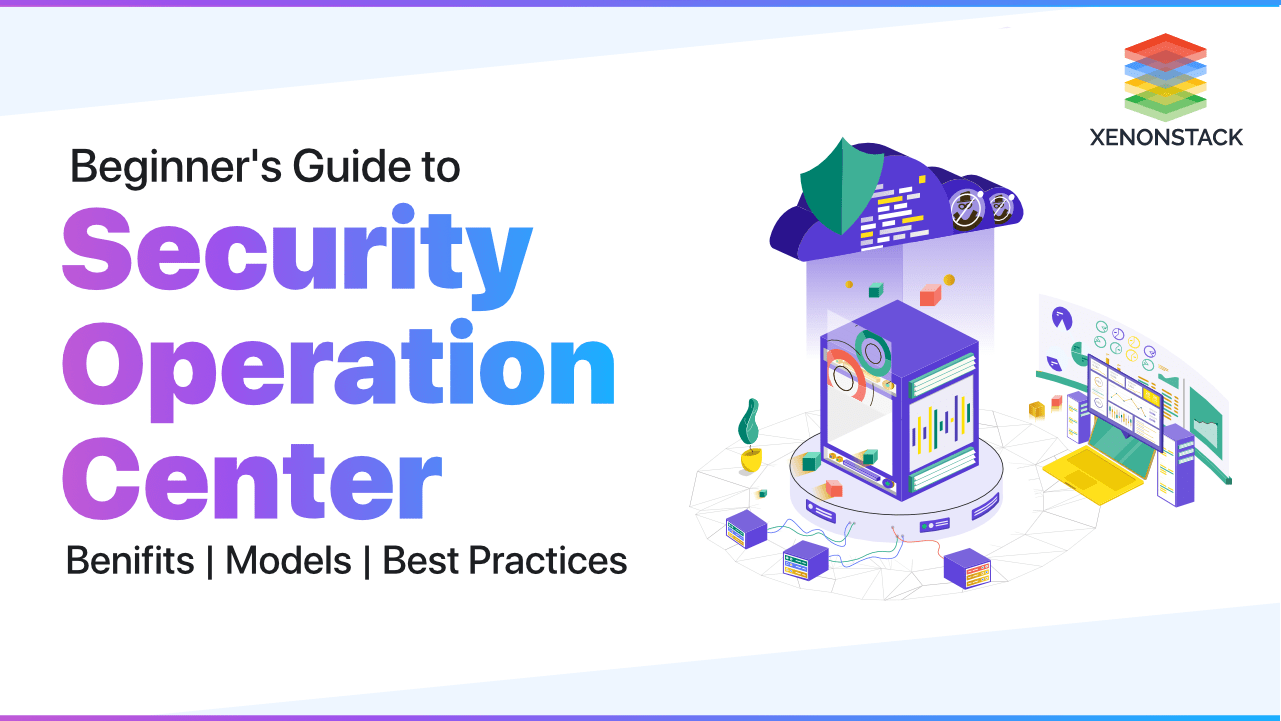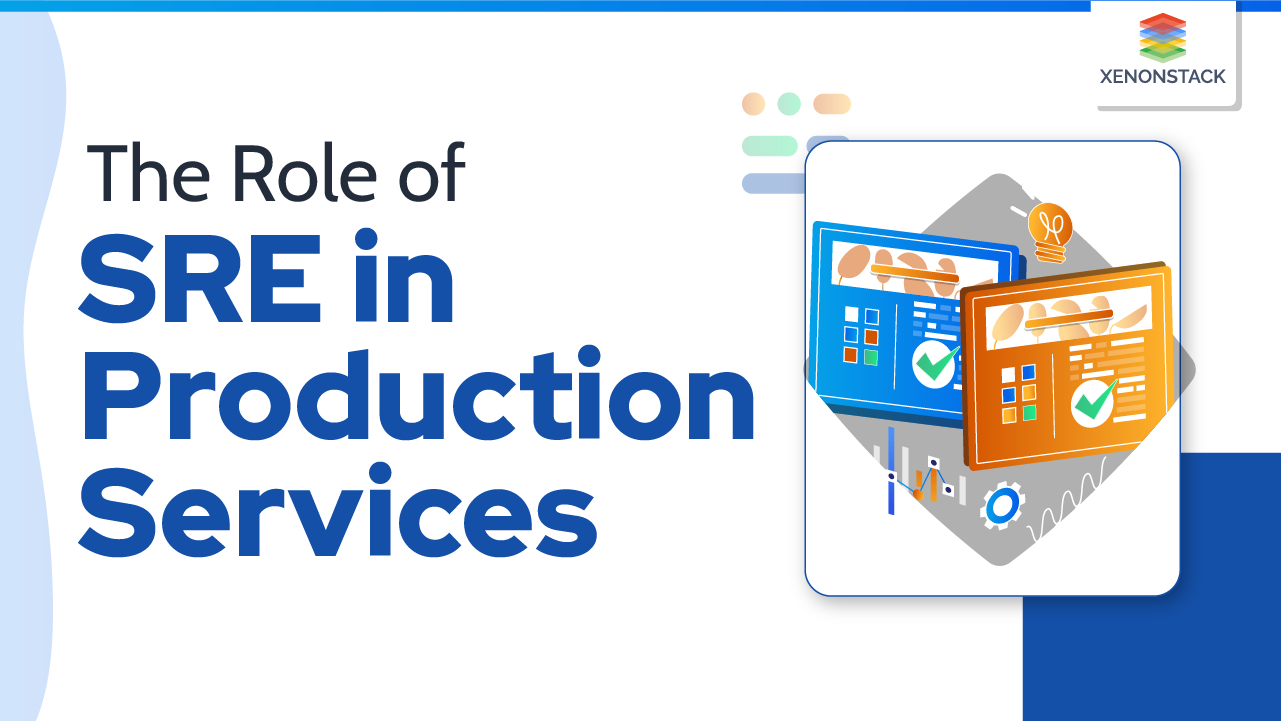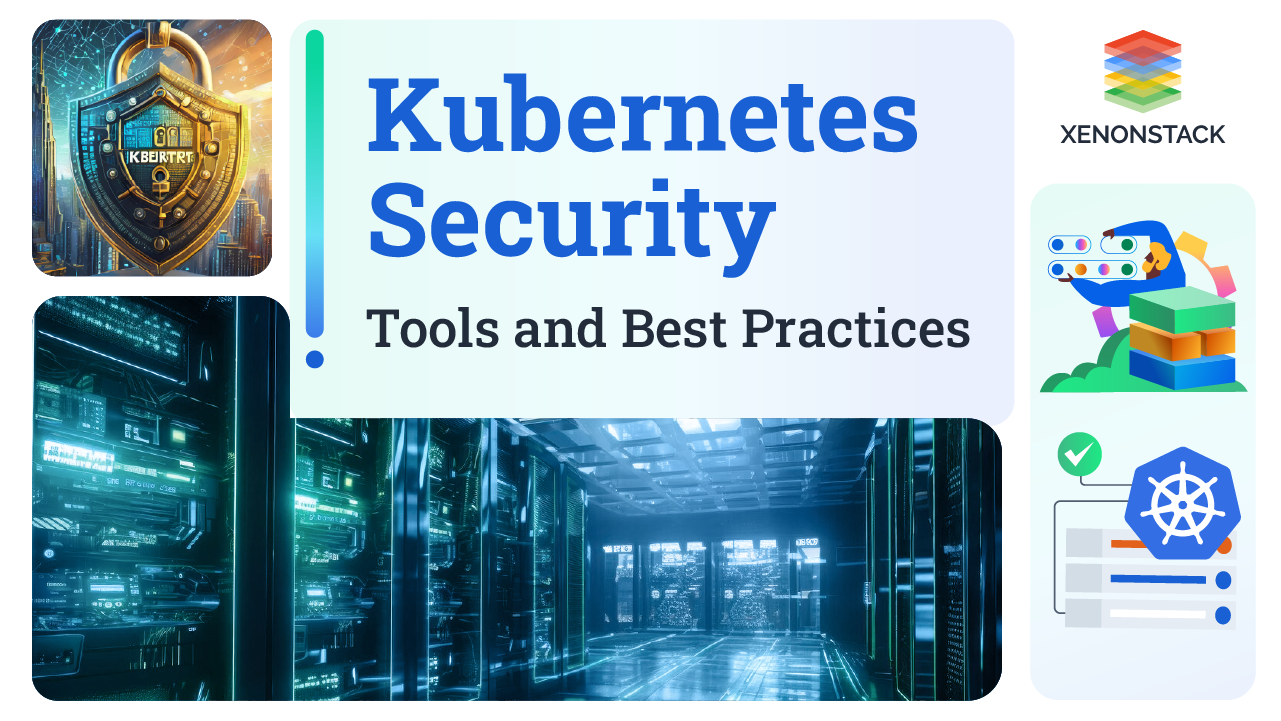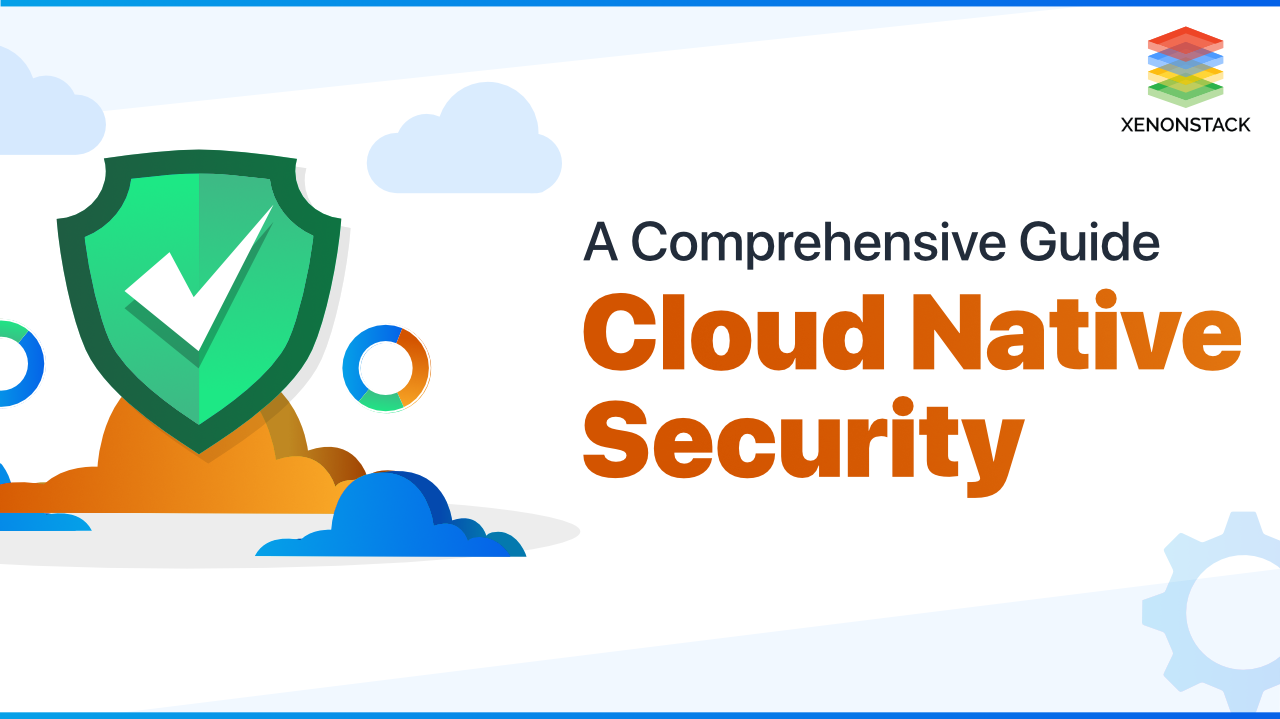
Introduction to Cloud Native Security
Before we start with Cloud Native Security, we need to understand why we need it. Cloud native application development is an approach to developing, building, and shipping applications that take advantage of modern Cloud computing services. These are applications that natively utilize services and infrastructure provided by Cloud computing providers, such as Amazon Web Services (AWS) or Google Cloud Platform (GCP).
Use of Cloud Native Technologies in Production Has Grown Over 200%. Source: CNCFWith such a huge increase in Cloud Native Technology usage, an important aspect of Security can't seem to miss out.
What is Cloud Native Security?
It is a security approach in which steps to ensure security are taken throughout the distinct lifecycle of cloud native applications, from the infrastructure planning phase to the client delivery and maintenance.
Every organization has a security policy. Most of the policies believe in having a fully patched and hack-proof system and then resisting changing the setup as reconfiguration may lead to leaving some security flow. But the current infrastructure security scenario is entirely different. It needs to act fast and make changes. Continuous improvement and adjustments are required to make a fully secure organization. Organizations need to follow the Three Rs of Enterprise security - Rotate, Repave, and Repair - in continuous delivery and infrastructure automation.
- Rotate the stack credentials every few minutes or hours.
- Repave every server and application every few hours from a recognized good state.
- Repair vulnerable operating systems and application stacks consistently within hours of patch availability.
Checkout an intergrated Approach to Cloud Native Security and Observability
What are its common types?
Following are the types of Cloud Native Security
Encrypted Data
Data in transit and at rest is encrypted. Different encryption algorithms are deployed as per the organization's technical expertise to prevent data leakage.
Network Security
Multiple networks exist in its ecosystems. Separation of one network from another, preventing attacks from outside, and providing or denying access comes under this.
Security Scans
Periodic security scans are done using open-source and commercial tools to ensure that cloud architecture and applications are free from any vulnerability.
Disaster Recovery Policy
Nowadays, it is mandatory across many organizations to have a disaster recovery policy. Floods, earthquakes, and other natural calamities are covered under this policy.
Securing DevOps with Cloud Native Security
At Xenonstack, we help companies and startups make a cultural shift to DevOps and the best practices implemented by default. Most attackers target applications and Operating systems with known vulnerabilities. Things like many patches to the operating system, applying proper roles and access control, and secure networks help reduce exploitable available to an attacker. With DevOps, it becomes possible to deliver the software faster. It eliminates possibilities for attacks. Therefore, to get safer, you have to go faster.
A software development philosophy that encourages security adoption in DevOps. Click to explore The Ultimate Guide to DevSecOps
Cloud Native Security Architecture
Several organizations are designing their own cloud native security frameworks nowadays. For example, Google has BeyondProd as its security solution that deals with infrastructure, microservices, pods, and development processes. In contrast, IBM has its own cloud native secure infrastructure service that helps secure storage, memory in-use protection, network security, and trusted computing functionalities.
Different organizations in the market have different frameworks and policies to make their environments secure. Some are designed as commercial frameworks to acquire more clients; others are shared as open-source alternatives.
However, in the end, its security framework always depends on the business needs of an organization. Organizations without cyber security expertise tend to buy commercial or open-source security frameworks for their use, and those with cyber security expertise create their frameworks.
Threats to Cloud Native Applications
We must mitigate these threats to have secure cloud native Applications.
Unauthorized Access
Unauthorized access in its applications happens due to unsecured API and legacy functionalities. Some of them are directly accessible in the public domain and may cause authentication bypass to the internal functionality of applications.
Organizations must create and implement security functions to provide proper authentication and authorization over the application resources so that unauthorized access is denied.
Absence of Multifactor Authentication
Most of the time, credentials are compromised, and password spraying attacks are common due to users' reuse of the same password on multiple websites and services. Due to this, if there is an absence of multi-factor authentication, then the risk of compromise increases in the cloud environment.
This can be prevented by implementing multiple authentication features for user access. Different users have different needs and resources. Therefore by providing multi-factor authentication controls, single-vector attacks can be avoided.
Misconfiguration
This is a common issue and can be credited to short delivery timings or the carelessness of developers while deploying their applications in a production environment. Most of the time, developers deploy applications on a server with default settings. Due to this, it becomes easier for an attacker to use default credentials or use publicly available exploits to breach the servers. Multiple applications can use cloud infrastructure side by side, so granting authorization to respective application users is difficult. Due to misconfiguration, data of the first application may be accessible by the user of another application, or vertical data privilege escalation might also happen.
Proper configuration of cloud environments and APIs is required to reduce the attack surface area for a cyber attack. It should be a high priority for developers to implement the application and API only after the default configurations are changed and default credentials are removed from the database.
Lack of Control
Organizations using cloud infrastructure from third-party vendors lack control over the cloud infrastructure and its services. If a cyberattack happens, an organization has to coordinate with third-party cloud vendors, which increases the turnaround time.
Organizations should choose a cloud vendor to provide their services on-premises if possible. Some international cloud providers already have such services where a mobile cloud data center is provided to their clients as per the requirements.
Data Privacy Concerns
Cloud vendors have administrative access to the cloud services they provide. Due to this, it is difficult for organizations to secure their data efficiently, as any cloud vendor can read or transfer an organization's data without intimating them. This makes confidentiality a major issue in cloud native environments.
To mitigate data privacy concerns, periodic auditing of database changes, monitoring of logs and zero trust policies, and limited data transfer authorization should be present.
How to block advanced persistent threats?
An advanced persistent threat is an armed attack on the target to get data and valuable information rather than causing damage to the organization. This attack remains undercover for a long time, silently learns how the whole stack works, and finally accesses sensitive data. If we know how the attack works, we can learn how to stop them. To launch an attack, an attacker needs three things.- Time
- Leaked credentials
- Unpatched software
Click here to learn how threat intelligence can help security teams to identify and mitigate security risks, respond quickly to security incidents, and improve their overall security posture.
What is the difference between Tradition Security and the 3 R's of Security?
The most significant concern in computer systems in today's era is security. Traditional approaches to organizational security often make things down and slow the speed of change. Organizations have to set monitoring sensors and systems in place to check whether a security breach has happened or not. It is considered a reactive approach as detecting the threat is prioritized instead of vulnerability resolution. Patches are also applied step-wise to resolve the vulnerabilities at a later stage. This approach follows a methodology that is resistant to modern technologies. We know that the more time the attacker has to compromise with the system, the more chances there are for potential damage.
Whereas its security three R's provide an automated vulnerability resolution mechanism. It uses a proactive approach to change the system configurations efficiently. The vulnerabilities cannot be replicated, and the virus or worm would be removed as soon as possible. Instead of patching, the vulnerable components are created from scratch, which is modeled to reduce the vulnerability from the beginning. The three R's are faster, better, and more secure than traditional approaches; using them with modern technologies is very easy. Therefore, the 3 R model has changed how Cloud Native Security is viewed.
| Tradition Security | 3 R's of Security |
| Monitored and Instrumented Systems - Organizations setup monitoring to find the changes whenever the security is breached | Automated - The system needs to be quickly updated. Automation and immutable infrastructure can help to remove the system from having security-breached configurations. |
| Reactive - Detecting the threat is the priority, and then further solving the vulnerability. | Proactive - The priority is to change the system's state so the malware cannot replicate and survive. |
| Patched Incremental - Patches are applied to the old system step by step to eliminate the issue. | Fresh, Clean State Deployment - Instead of patching the old systems, new clean images are used to deploy things in an automated way. |
| Resisting Changes - It prefers to patch the old systems which are resisting changes. | Promoting Changes - This approach deals with changes faster and is secure. |
What are the 3 R's of Cloud Native Security?
The Three Rs of Security is the approach toward the safety of cloud deployment. The basic premise of the Three Rs of the Enterprise Security model is that the more time you give to the attacks, the more opportunity they will cause severe damage. So it is best to embrace the change and move quickly. Let's understand the 3 Rs in detail.
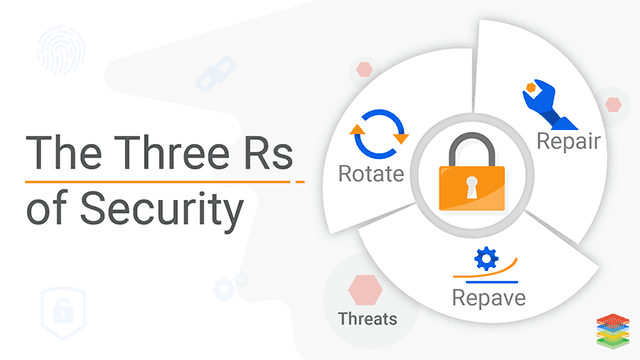
Rotate
The data center's credentials of individuals, data centers, automated services, etc., should be rotated after every few minutes. These credentials can be any certificates, passwords, or access tokens. Sometimes, you can't stop the credentials from getting leaked, but rotating them after every few hours or minutes makes it difficult for the attackers to get hands-on with these credentials.Repave
Rebuild every server and application in the data center from a known secure state. Instead of patching the particular software, you can also repair the whole stack by destroying the old containers and VMs and rebuilding them from a known secure state.Repair
Although repaving should be done for vulnerable components, prioritizing securing the system from vulnerability should be prioritized. Therefore whenever a vulnerability is found, the system, program, or method should be repaired as soon as possible. It helps make the system more secure by repairing the vulnerability and reducing the attack surface area.
Adaptive Security is a holistic approach that continuously investigates behaviors and events to protect against the threat and adapt to the threats accordingly before they happen. Learn Why we should adopt Adaptive Security for Cloud Native Applications?
What are the four C's of Cloud Native Security?
In Kubernetes documentation, this complete diagram gives us a clear picture of its security. Open-source software is embedded into several frameworks that help power web apps; several underlying principles help direct your instincts about how you should think holistically regarding protection. This guide should describe a visual model for certain general principles regarding Native Protection in the Cloud. Safeguarding against low safety practices in Cloud, Containers, and Code is almost difficult by approaching security only at the code level. So let us explain the 4 layers in length.
- Cloud
- Cluster
- Container
- Code
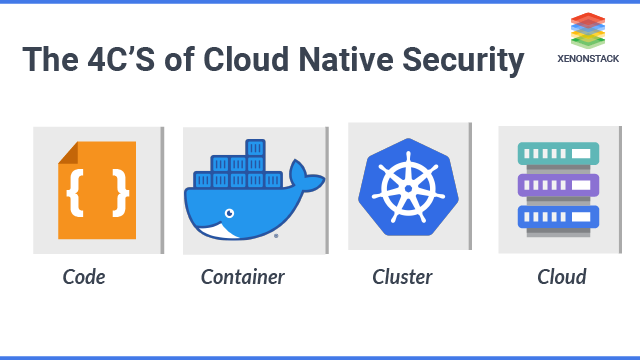
Cloud
In several cases, a Kubernetes cluster's reliable computational base is the Cloud ( servers or data center). If such components are not secure themselves (or designed in a fragile manner); otherwise, there is no clear way to guarantee the safety of all components installed on top of this foundation. All the cloud providers have extensive security recommendations that customers can take care of.Cluster
Ensure to secure these two things in clusters: the configurable components and the components that run in the cluster.Container
To order to run a program in Kubernetes, it is in the container. Because of this, the container becomes very important. Thus, specific security considerations must be taken into account to benefit from the workload security primitives of Kubernetes.Code
Finally, moving down to the application code level, this is one of the primary attacks surfaces over which we have the most control.Cloud Native Security Controls
There are many types of cloud native security controls that can be divided mainly into the below categories.
Deterrent Controls
These controls warn a user that his action is malicious and that the attempted action has been logged in application logs. Some users may unintentionally perform some actions that may pose a security threat to the organization or cause sensitive data leakage. Deterrent controls help block such attempts and prevent the user from proceeding further.
Preventive Controls
These controls can be automated scripts, security software, or policies preventing cyber attacks. It reduces the attack surface area and secures network access control.
Detective Controls
Intrusion detection systems, software, policies, and procedures come under detective controls. The main motive of detective control is to monitor the application, server, open ports, and any intrusive user behavior which may affect the overall security posture.
Corrective Controls
These controls come into effect when there is a security breach. It may include blocking the compromised ports or blacklisting the intrusive IP address, or stopping the execution of malicious programs.
Workload Controls
These controls manage the container's images, approved packages, and list of secure libraries and repositories in cloud native environments. All the data is tracked continuously along with each newer version update. Each version in use is controlled separately if the workload is distributed across multiple clients using different versions.
Identity and Access Management Controls
These are mainly based on team member access management and customer identities. Cross-level privilege escalations are prevented using this control.
Cloud Native Security Tools
Here is the list of tools that can help to secure applications.
Clair
Clair is used for static scans of docker images for security vulnerabilities in cloud environments. It uses the Clair client API to scan the images and match them with already known vulnerabilities available in the public domain.
Curiefense
Curiefense is an open-source cloud native application security platform used to secure web applications, services, and APIs. Bot management, firewall management, denial of service protection, session profiling, etc., are a part of it. It can also be integrated with Nginx and envoy proxy tools to block malicious attacks.
Falco
Falco is a threat detection package that can be used for defining security rules for the containers. It scans for known CVEs and generates alerts. Unusual application usage, privilege escalation, unexpected network connection, and risk-based read/write abilities can be detected. It can also be integrated with other tools such as Kubernetes, elastic search, Prometheus, etc.
Open Policy Agent
Open Policy Agent tool is developed by Styra. It is an open policy engine that can be deployed on an entire stack in the cloud. Fine-grained policies for containers, APIs, Kubernetes, and other services can be implemented. It uses a unique high-level declarative language to specify the policy for creating, updating, and deleting services and records. Context-based rules can also be created using an open policy agent.
Kube-bench
Kube-bench is an auditing tool for Kubernetes. It checks whether Kubernetes is implemented according to best security practices by running a scan based on CIS benchmarks for Kubernetes.
Cloudsploit
Cloudsploit notifies about cloud security misconfigurations and their risks. Different types of compliance policies like HIPAA, PCI DSS, and CIS Benchmarks can be utilized in this tool. This tool is not vendor-specific and can be used to scan multiple cloud environments.
Pacu
Pacu is a toolkit used for pen testing the AWS cloud environment offensively. Privilege escalation, backdoor, vulnerable lambda functions, etc., are some of the test cases used by this tool.
Conclusion
Many organizations realize that security needs to be added before the development process instead of keeping it in Q&A in the software development life cycle. Moving the security testing to earlier in the development cycle, they have a much higher success rate and much higher throughput. The efficiency increased as developers didn't have to wait for the security to do things. All the penetration testing goes along with the development, decreasing the application delivery time.
- Discover more about the Role of DevSecOps in CI/CD
- Explore here about Impact of Insider Threats in Cyber Security
- Click to explore Secure Coding Best Practices and Its Checklist
